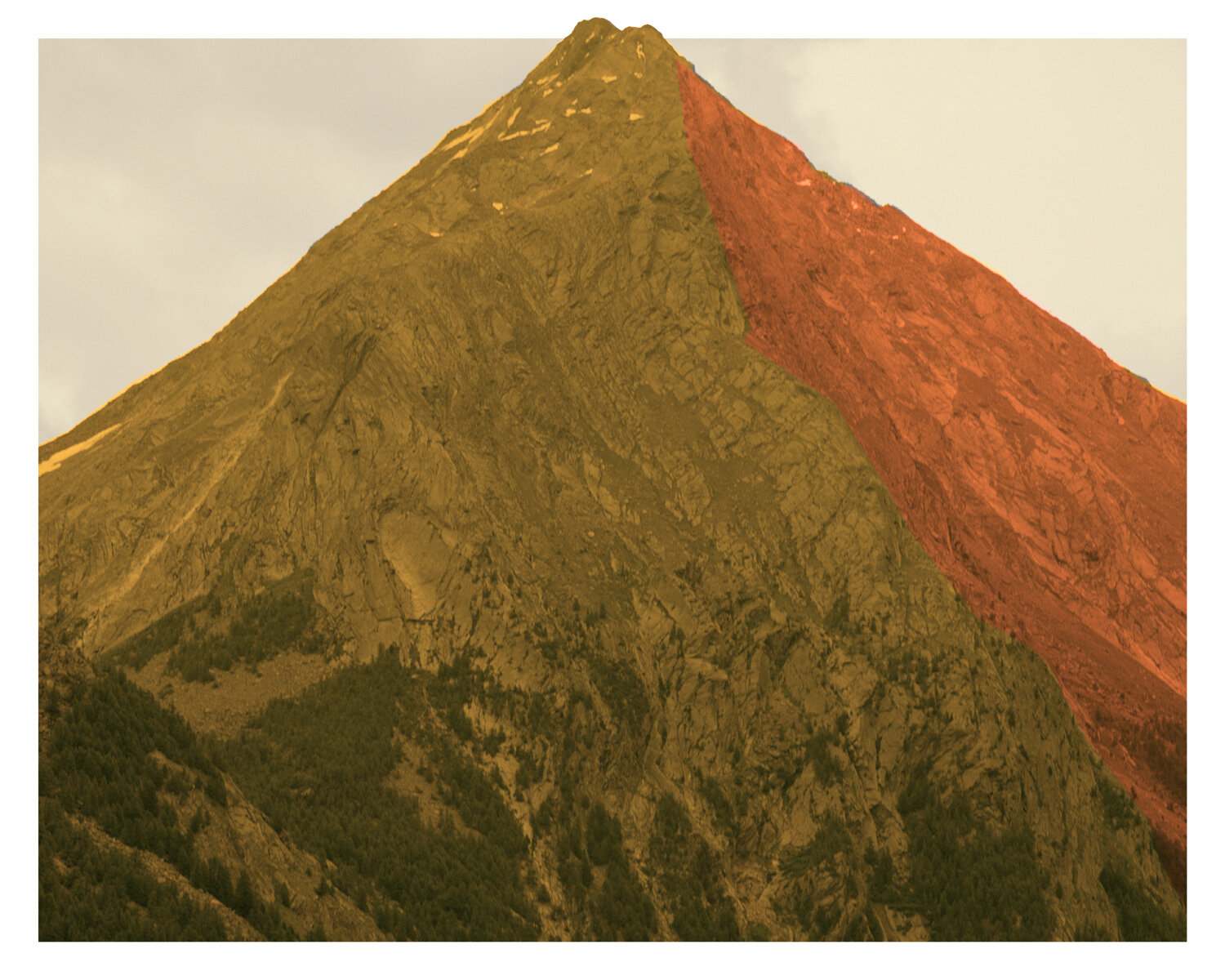
HIKARI
Hikari is a Japanese word meaning «the light»
This work represents my compulsion to build and shape my own memory. To reconstitute some facts I haven’t experienced myself, but have unconsciously influenced me while growing up.
My grandparents witnessed the war; survivors who finally passed away and whose memories will soon be a part of history.
Only once did we speak about their experiences during the war. They told me how illness can take away your sisters; the shame; the relief after the war; and the watermelons ...
But after that night, we never talked about it again. As if my grandparents gave me their memories as a whisper through the air before allowing it to disappear from their minds.
Somehow, I would say that I borrowed their memories. I use their stories as source of inspiration for my own testimony.

Almagellhorn
2013
paper size : 63 x 79 cm
image size : 59 x 75 cm
archival pigment print, FA Hahnemühle Baryta 325,
silkscreen, mounted, oak frame without glass.
edition of 3 + 2 artist’s proofs
signed, dated and numbered verso

Raid B-29 du 18 juin 1945 sur Kobé
(B-29 raid of 18 June 1945 on Kobe)
On 18 June 1945, 25 B-29 bombers laid naval mines in waters near Kobe.
2013
paper size : 78 x 98 cm
image size : 72,5 x 92,5 cm
archival pigment print, FA Hahnemühle Baryta 325,
mounted, oak frame without glass.
edition of 3 + 2 artist’s proofs
signed, dated and numbered verso
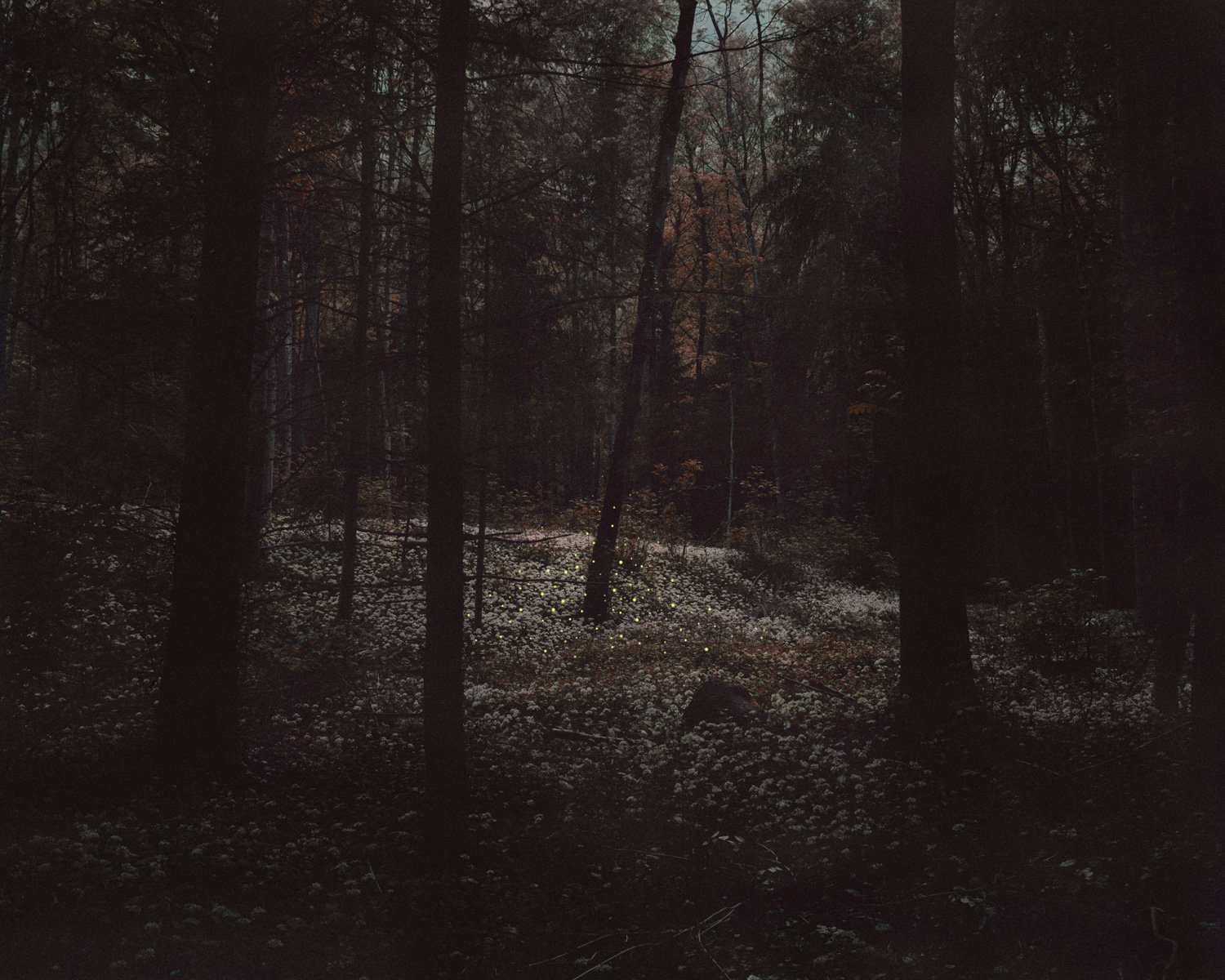
Le tombeau des lucioles
(The grave of the fireflies)
I was deeply inspired by the movie Grave of the Fireflies, a Japanese animation film written and directed by Isao Takahata and animated by Studio Ghibli. It is based on the 1967 semi-autobiographical novel Grave of the Fireflies by Akiyuki Nosaka. This film reminds me very much of what my grandparents lived through during the war. They lived in the same city – Kobe – as the protagonists and hence experienced the events described in the movie.
2012
paper size : 78 x 98 cm
image size : 72,5 x 92,5 cm
archival pigment print, FA Hahnemühle Baryta 325,
mounted, oak frame without glass.
edition of 3 + 2 artist’s proofs
signed, dated and numbered verso
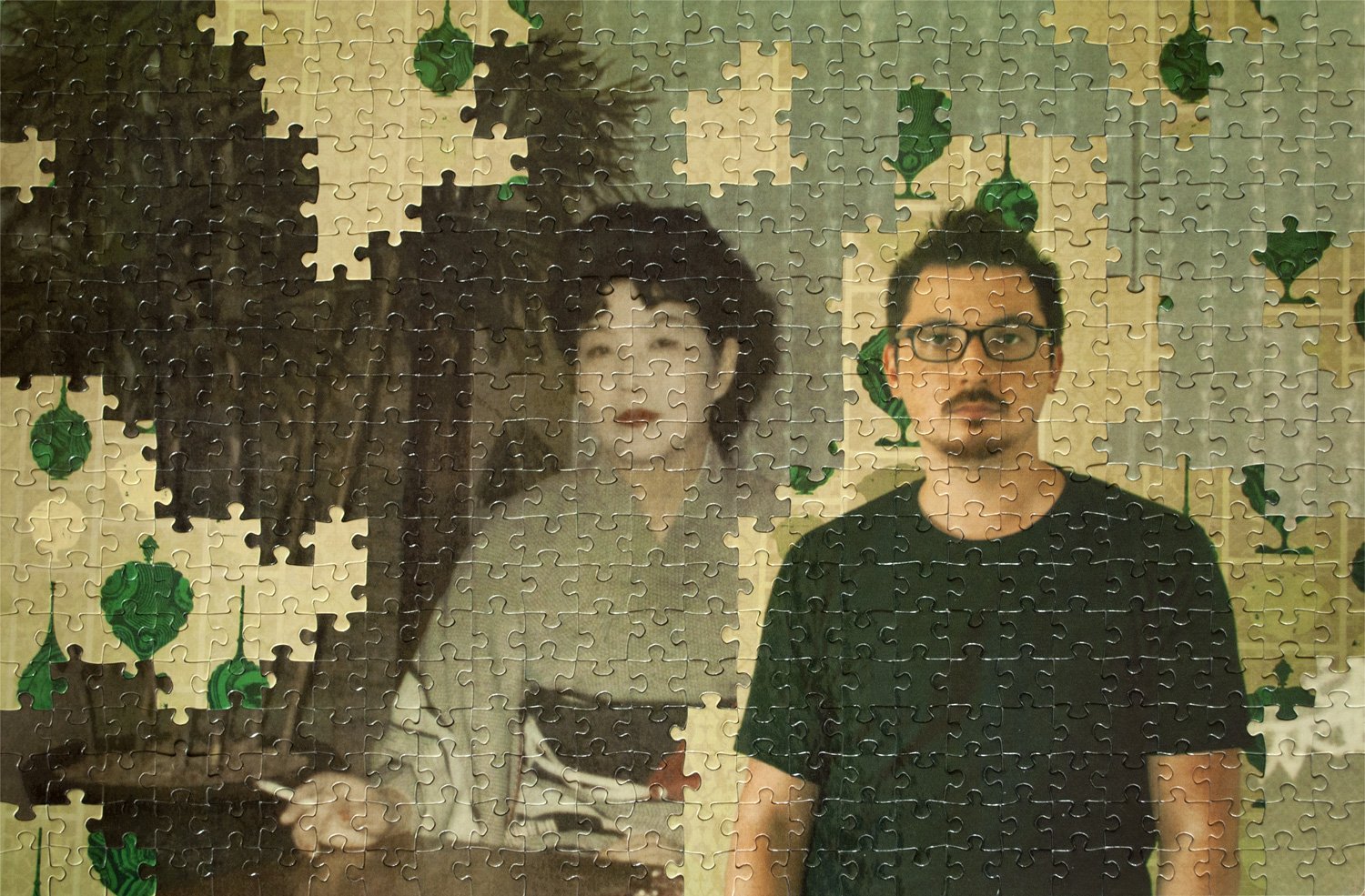
Batien & moi
(Batien and I)
2015
31,5 x 47,5 cm
puzzle 500 pieces
edition of 3 + 2 artist’s proofs
signed, dated and numbered
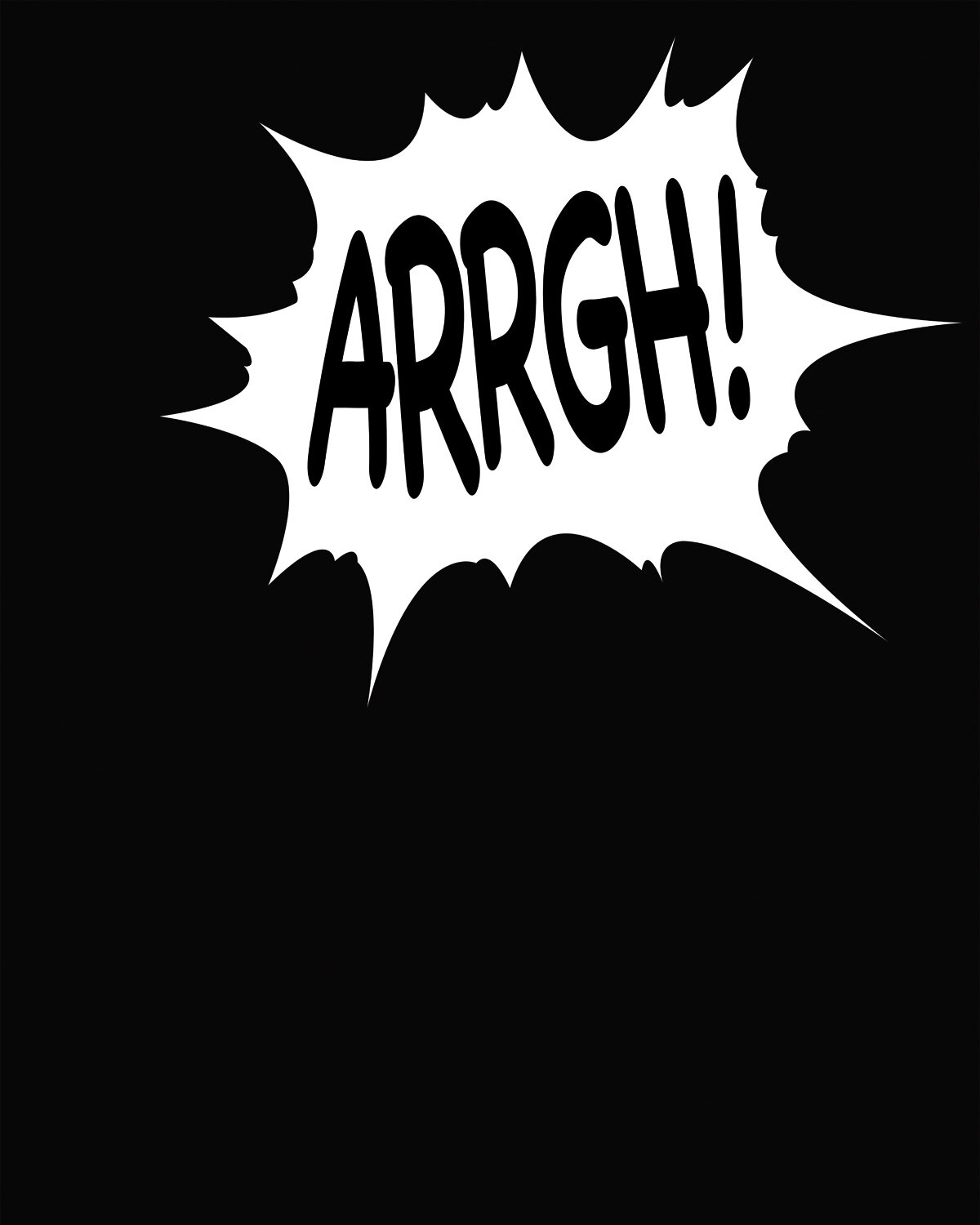
ARRGH !
A lot of the memories of my grandparents during World War II were sounds. During the bombings, they went to underground shelters. It was dark. The memories that remain from these incidents are the sound of explosions, the sound of planes, people crying …
So, my question was: how can I introduce sound into my pictures? It’s why I decided to use onomatopoeia (that were found in manga/comics) and to paint them over the prints using acrylic.
I started to produce the three images with the onomatopoeia on the black background (‘Viiiuuu, viiiuuu, viiiuuu, viiiuuu’, ‘Tatatatata’ and ‘ARRGH!’). For me it was like this: I took the memories of my grandparents and literally transposed them onto the picture. (The underground shelters where it was very dark – black background with just the sound of people crying, the sound of airplanes, etc. – onomatopoeia).
2013
paper size : 98 x 78 cm
image size : 92,5 x 72,5 cm
archival pigment print, FA Hahnemühle Baryta 325, acrylic paint,
mounted, oak frame without glass.
unique
signed, dated and numbered verso

Rising sun
The sun rises just above the horizon and the sun’s rays reflect off the water of Lake Geneva.
2013
paper size : 146 x 183,5 cm
image size : 137,5 x 175 cm
archival pigment print, FA Hahnemühle Baryta 325,
mounted, oak frame without glass.
edition of 3 + 2 artist’s proofs
signed, dated and numbered verso
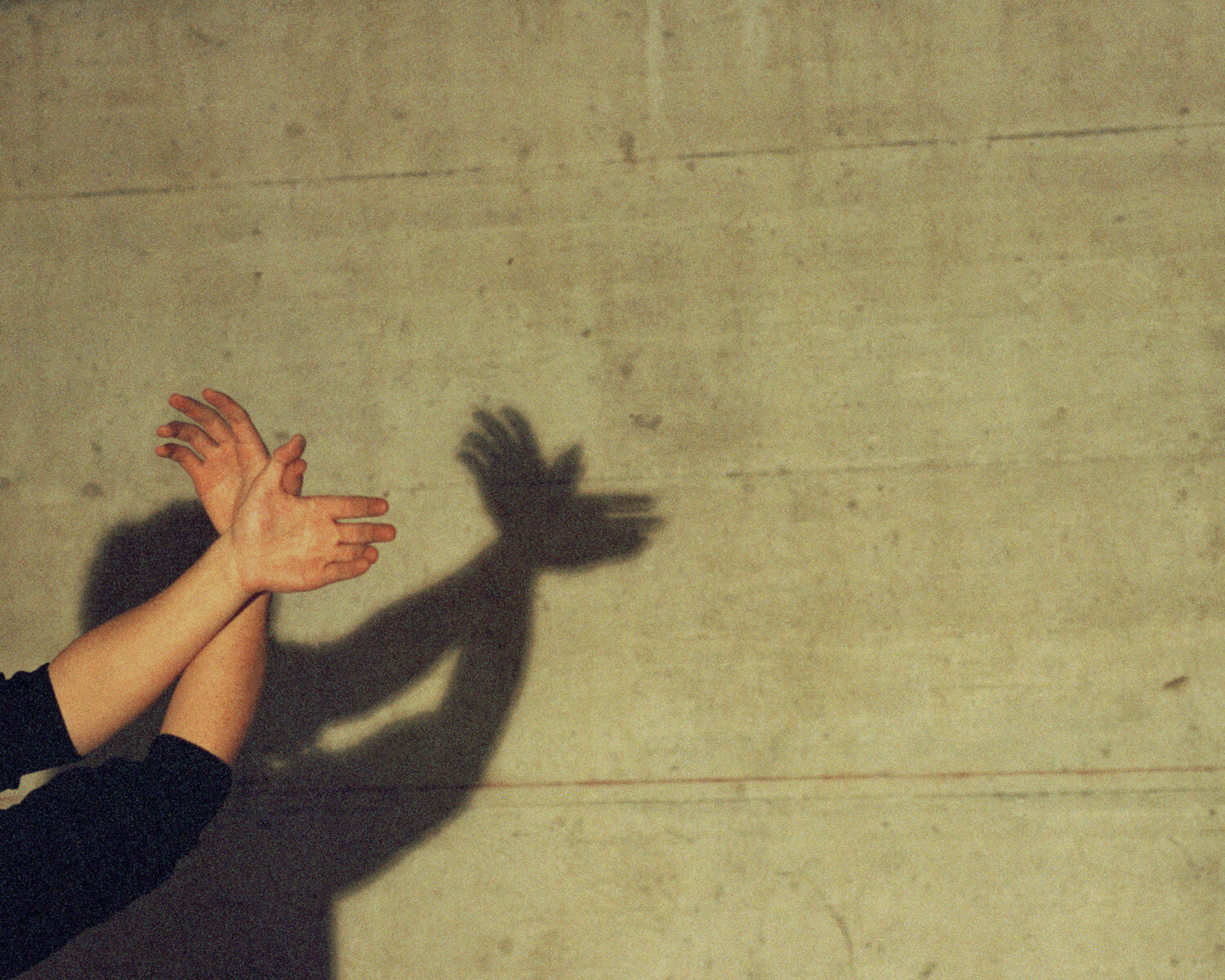
Le bunker
(The bunker)
A few weeks after the explosion of the atomic bomb, scientists saw that the flash from the bomb had discoloured the walls that were still standing. The bomb had left marks corresponding to projections of objects, bodies and street furniture like a photographic projection. The heat from heat radiation made visible shadows on the ground. The shadows could be a man who was standing at the time of the tragedy and had somehow ‘protected’ the wall from the bomb. It was the same with a ladder, a valve or pylons of a bridge.
2012
paper size : 63 x 79 cm
image size : 59 x 75 cm
archival pigment print, FA Hahnemühle Baryta 325,
mounted, oak frame without glass.
edition of 3 + 2 artist’s proofs
signed, dated and numbered verso
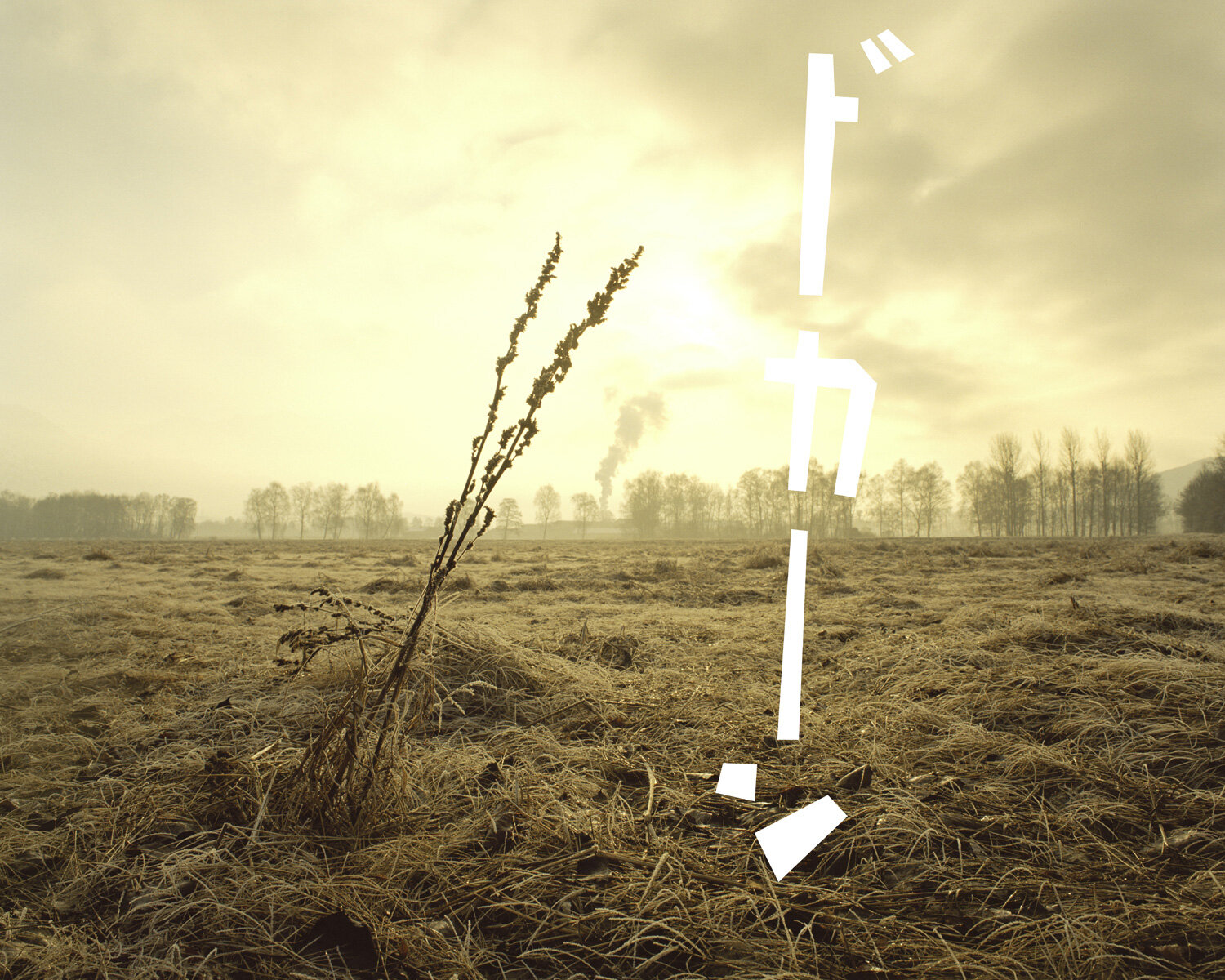
BAOUMMM
My second experimentation with the idea of sound was with the images (BAOUMMM and Pluie noire). I wanted to see how the onomatopoeia could add something to help understand the picture better or to feel/describe a sensation or a situation.
2013
paper size : 146 x 183,5 cm
image size : 137,5 x 175 cm
archival pigment print, FA Hahnemühle Baryta 325, acrylic paint,
mounted, oak frame without glass.
unique
signed, dated and numbered verso
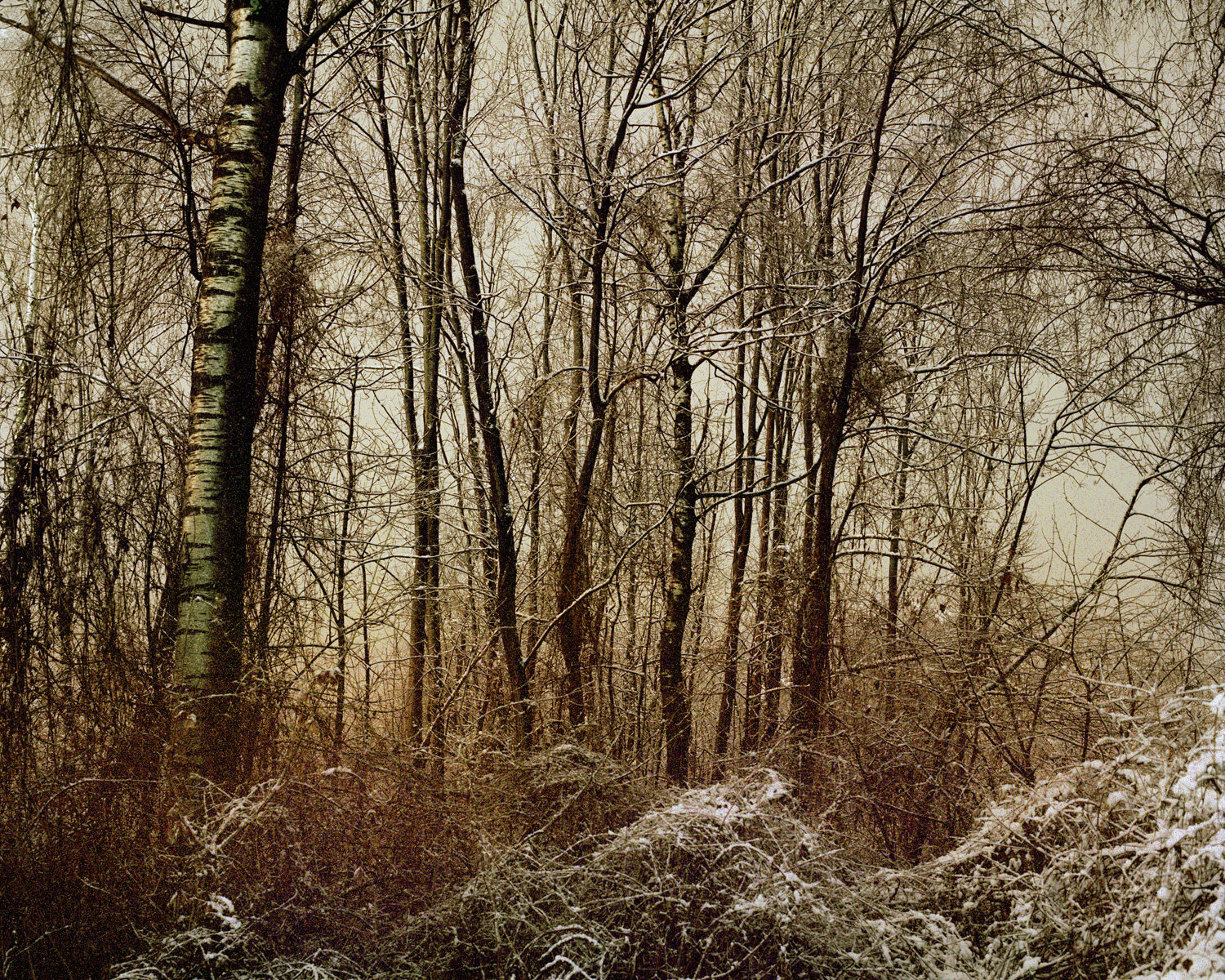
Jaune : strontium 90, rouge : plutonium 239, violet : césium 137
(Yellow : Strontium 90, red : plutonium 239, purple : caesium 137)
Inspired by Akira Kurosawa’s Dreams – Mount Fuji in red.
A large nuclear power plant near Mount Fuji has begun to melt down; its six reactors explode one by one. The breaches fill the sky with hellish red fumes. After an unspecified amount of time, two men, a woman, and her two small children are seen alone, left behind on land in broad daylight. The older man explains to the younger man that the rest have drowned themselves in the ocean. He then says that the many different colours of the clouds billowing across the post-apocalyptic landscape signify different radioactive isotopes; according to him, red signifies plutonium-239, a tenth of a microgram of which is enough to cause cancer. He elaborates on how other released isotopes cause leukaemia (strontium-90) and birth defects (cesium-137) before wondering at the foolish futility of colour-coding radioactive gases of such lethality.
2014
paper size : 146 x 183,5 cm
image size : 137,5 x 175 cm
archival pigment print, FA Hahnemühle Baryta 325,
mounted, oak frame without glass.
edition of 3 + 2 artist’s proofs
signed, dated and numbered verso
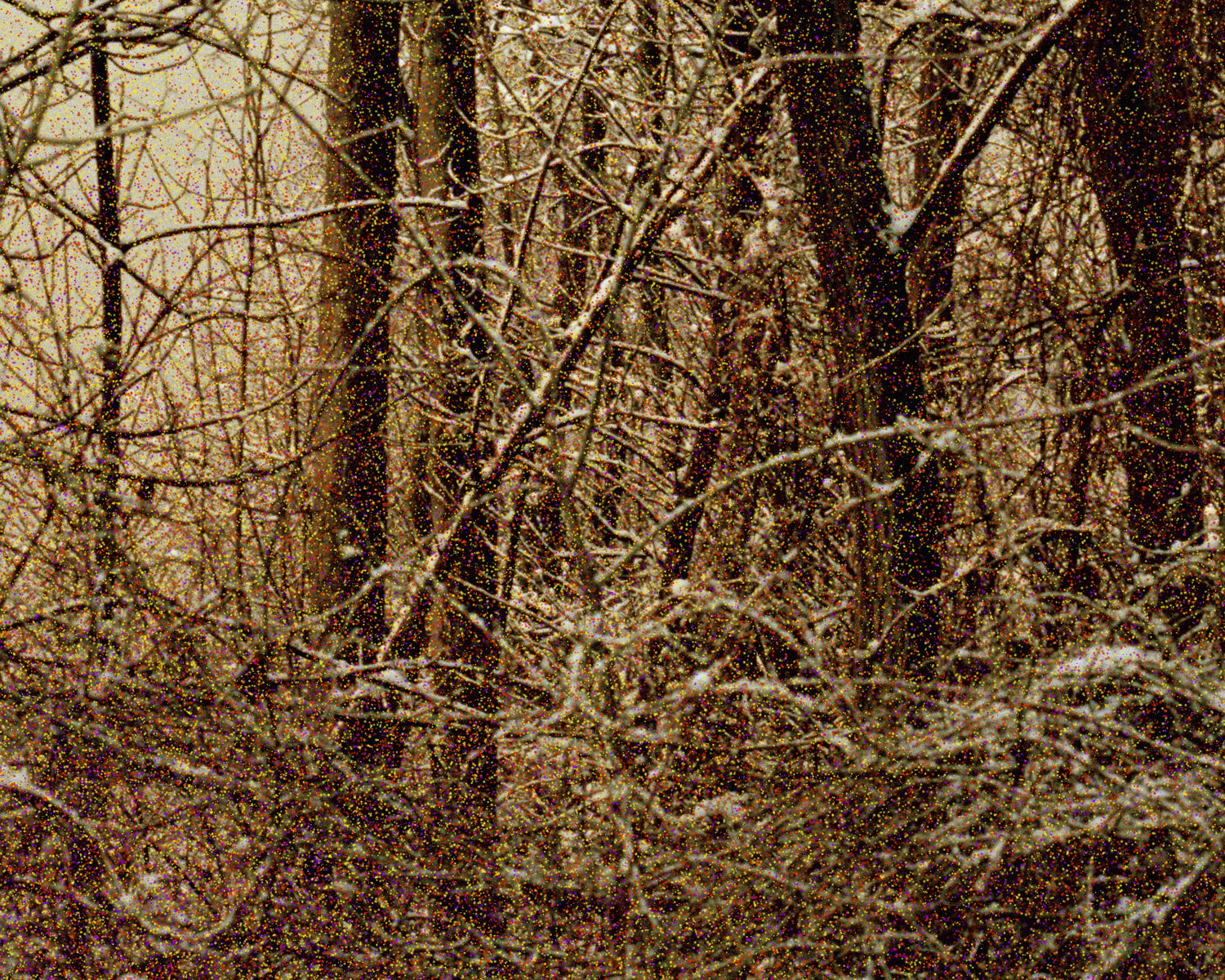
Jaune : strontium 90, rouge : plutonium 239, violet : césium 137 (details)
(Yellow : Strontium 90, red : plutonium 239, purple : caesium 137)
(details)
Inspired by Akira Kurosawa’s Dreams – Mount Fuji in red.
A large nuclear power plant near Mount Fuji has begun to melt down; its six reactors explode one by one. The breaches fill the sky with hellish red fumes. After an unspecified amount of time, two men, a woman, and her two small children are seen alone, left behind on land in broad daylight. The older man explains to the younger man that the rest have drowned themselves in the ocean. He then says that the many different colours of the clouds billowing across the post-apocalyptic landscape signify different radioactive isotopes; according to him, red signifies plutonium-239, a tenth of a microgram of which is enough to cause cancer. He elaborates on how other released isotopes cause leukaemia (strontium-90) and birth defects (cesium-137) before wondering at the foolish futility of colour-coding radioactive gases of such lethality.
2014
paper size : 146 x 183,5 cm
image size : 137,5 x 175 cm
archival pigment print, FA Hahnemühle Baryta 325,
mounted, oak frame without glass.
edition of 3 + 2 artist’s proofs
signed, dated and numbered verso
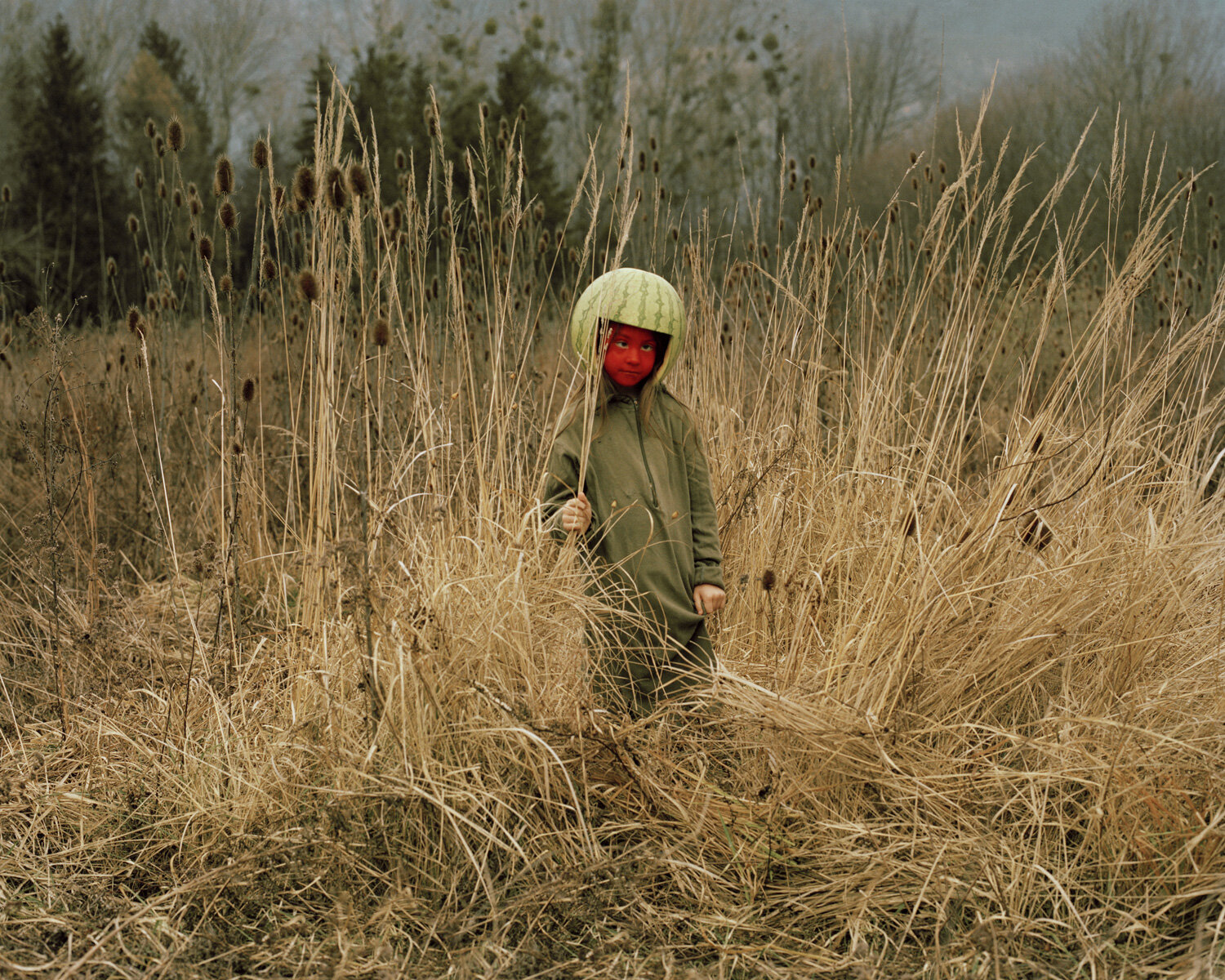
Mishiko
Mishiko was the youngest sister of my grandfather. She fell ill during the war, and doctors diagnosed poor hydration. In Japan, watermelon is a very popular fruit and holds a lot of water. So her parents gave it to her regularly. But the diagnosis was wrong; it was a salt deficiency and she died shortly afterwards.
2012
paper size : 146 x 183,5 cm
image size : 137,5 x 175 cm
archival pigment print, FA Hahnemühle Baryta 325,
mounted, oak frame without glass.
edition of 3 + 2 artist’s proofs
signed, dated and numbered verso
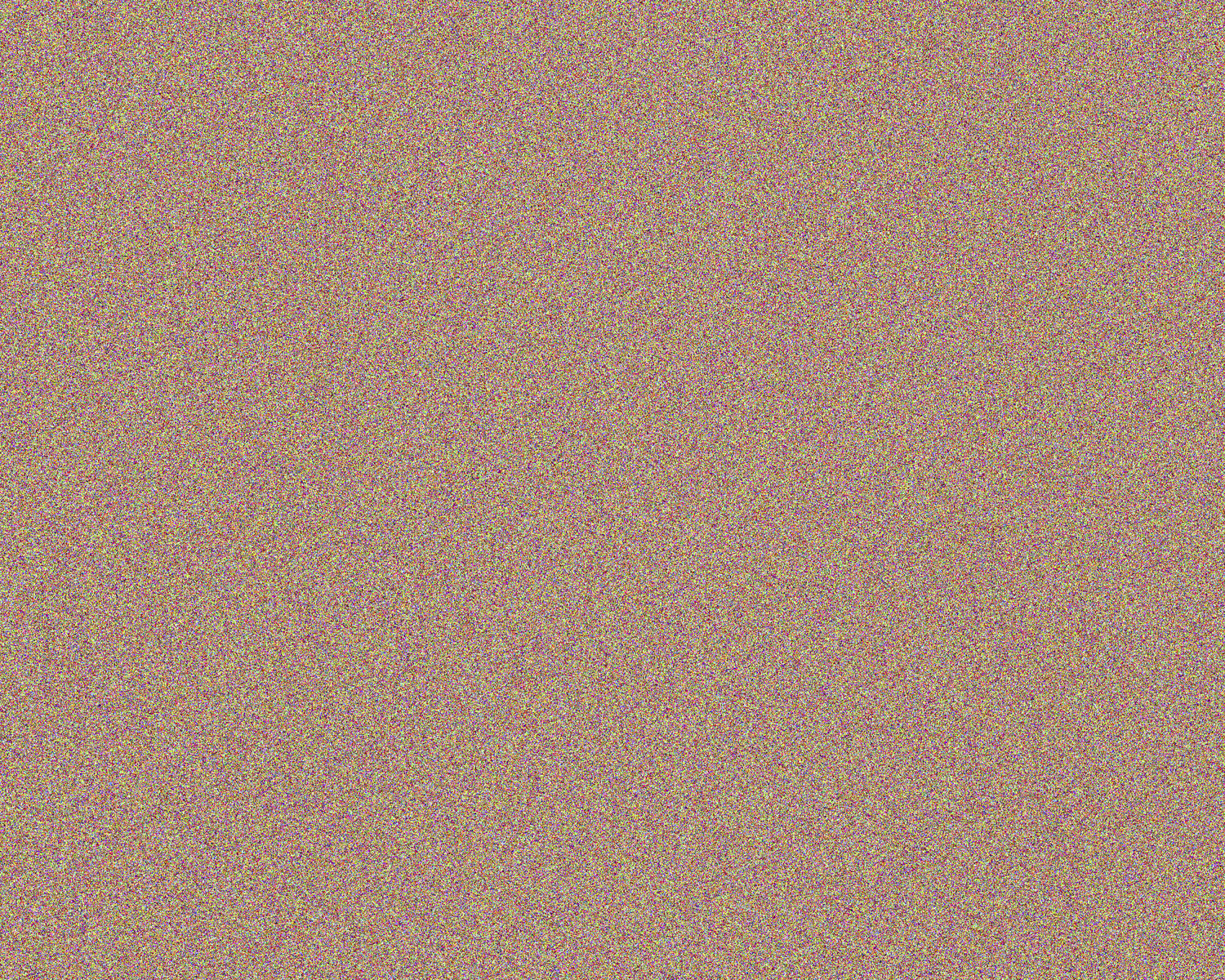
Pikadon
My third test with the idea of sound was with the picture ‘Pikadon’. Here I no longer use the onomatopoeia; I just paint the result of the sound/explosion of the image. Pikadon is a word that has been integrated into Japanese vocabulary as a result of the atomic bombs. Translated, pika means the flash (bright light) and don means explosion, representing what was seen and heard when the bombs were detonated. After taking a picture of a flash, I scanned the negative and I destroyed the grain of the image with Photoshop by adding noise. Then I painted the ‘sound/explosion’ result on the print.
2013
paper size : 146 x 183,5 cm
image size : 137,5 x 175 cm
archival pigment print, FA Hahnemühle Baryta 325, acrylic,
mounted, oak frame without glass.
unique
signed, dated and numbered verso
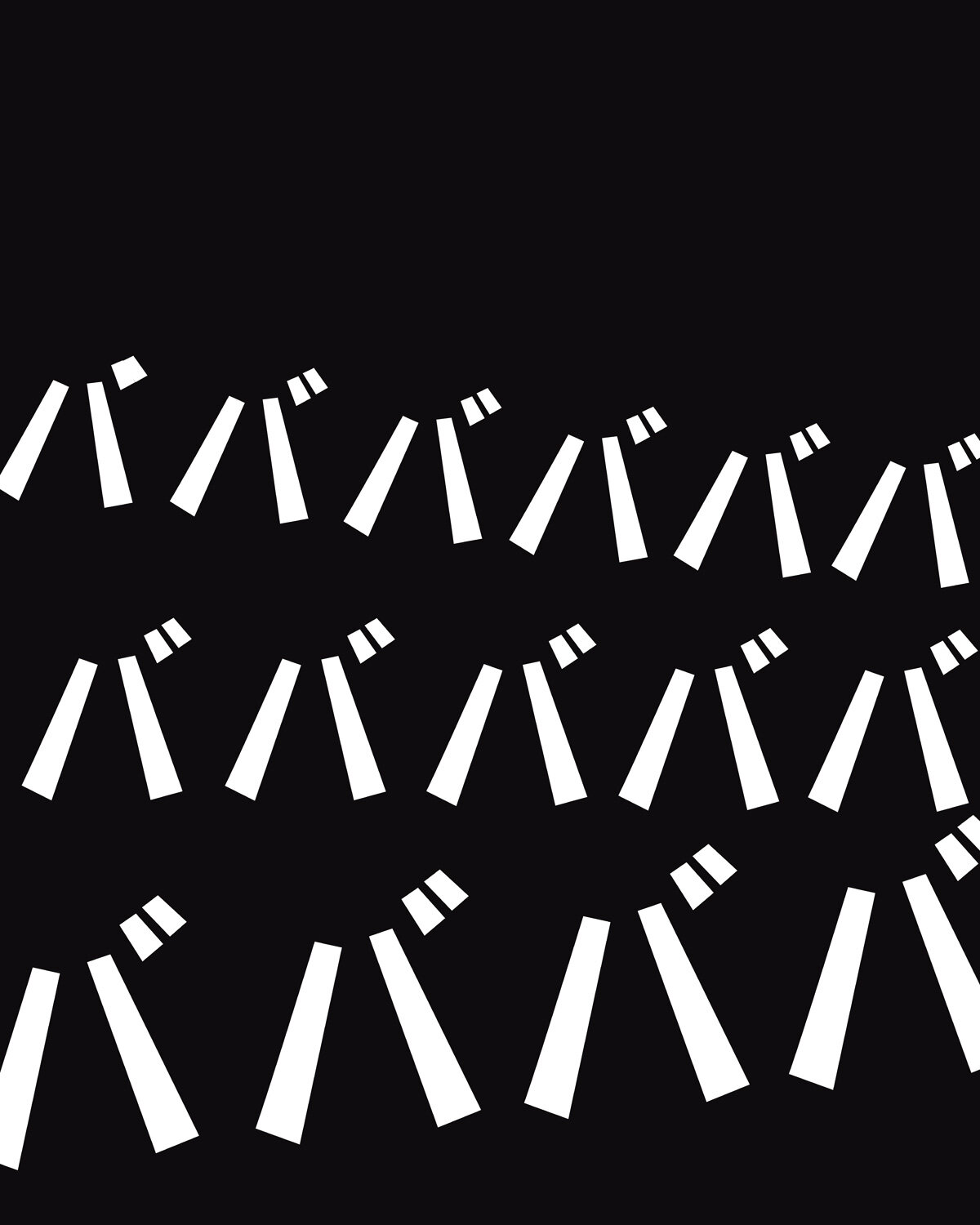
Tatatatata
A lot of the memories of my grandparents during World War II were sounds. During the bombings, they went to underground shelters. It was dark. The memories that remain from these incidents are the sound of explosions, the sound of planes, people crying … So, my question was: how can I introduce sound into my pictures? It’s why I decided to use onomatopoeia (that were found in manga/comics) and to paint them over the prints using acrylic.I started to produce the three images with the onomatopoeia on the black background (‘Viiiuuu, viiiuuu, viiiuuu, viiiuuu’, ‘Tatatatata’ and ‘ARRGH!’). For me it was like this: I took the memories of my grandparents and literally transposed them onto the picture. (The underground shelters where it was very dark – black background with just the sound of people crying, the sound of airplanes, etc. – onomatopoeia).
2013
paper size : 98 x 78 cm
image size : 92,5 x 72,5 cm
archival pigment print, FA Hahnemühle Baryta 325, acrylic paint,
mounted, oak frame without glass.
unique
signed, dated and numbered verso
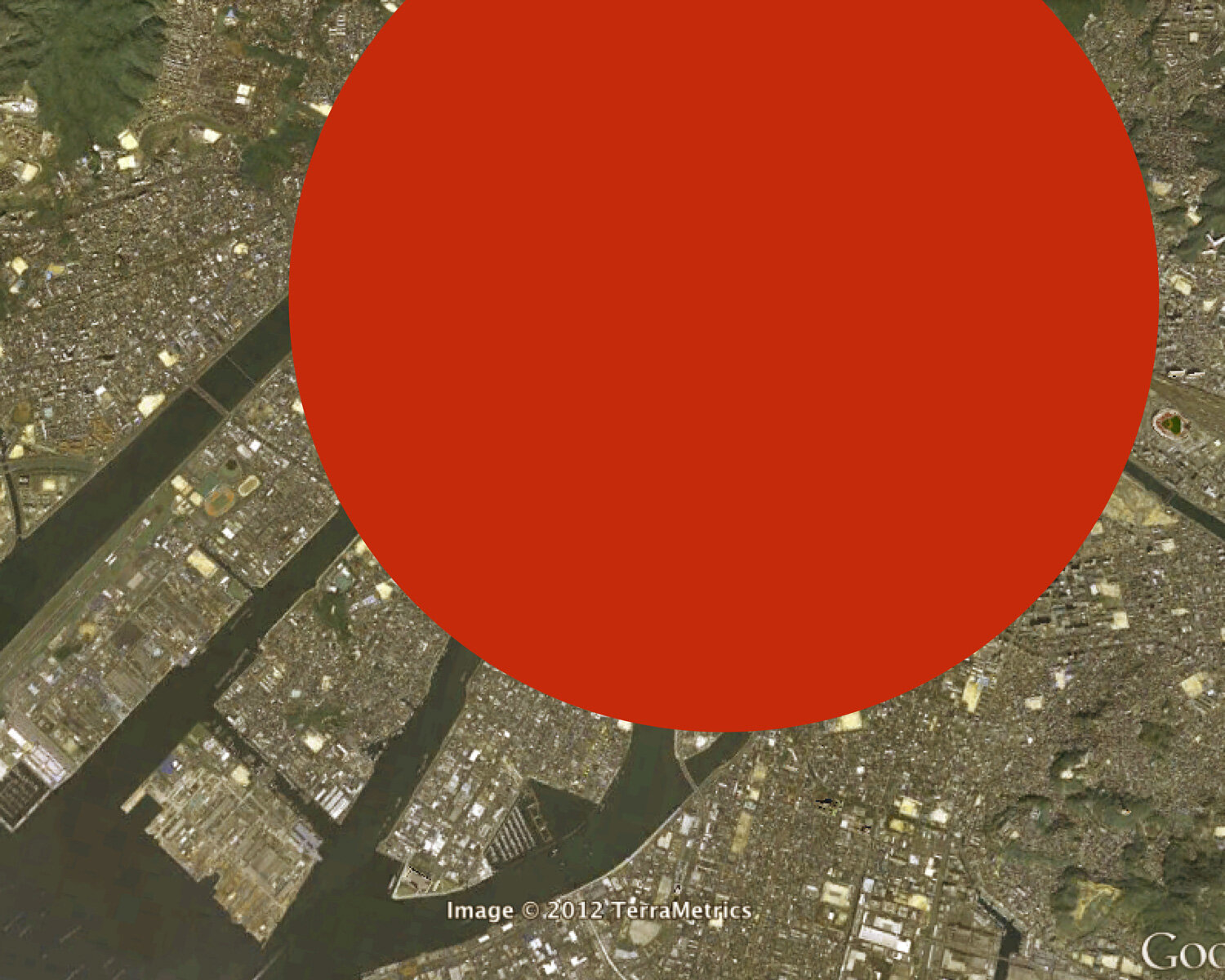
Dommages & radiation maximale de Little Boy
(Damages and Little Boy maximum radiation)
‘Little Boy’ was the code name for the type of atomic bomb dropped on the Japanese city of Hiroshima on 6 August 1945 during World War II.
2013
paper size : 78 x 98 cm
image size : 72,5 x 92,5 cm
archival pigment print, FA Hahnemühle Baryta 325,
mounted, oak frame without glass.
edition of 3 + 2 artist’s proofs
signed, dated and numbered verso
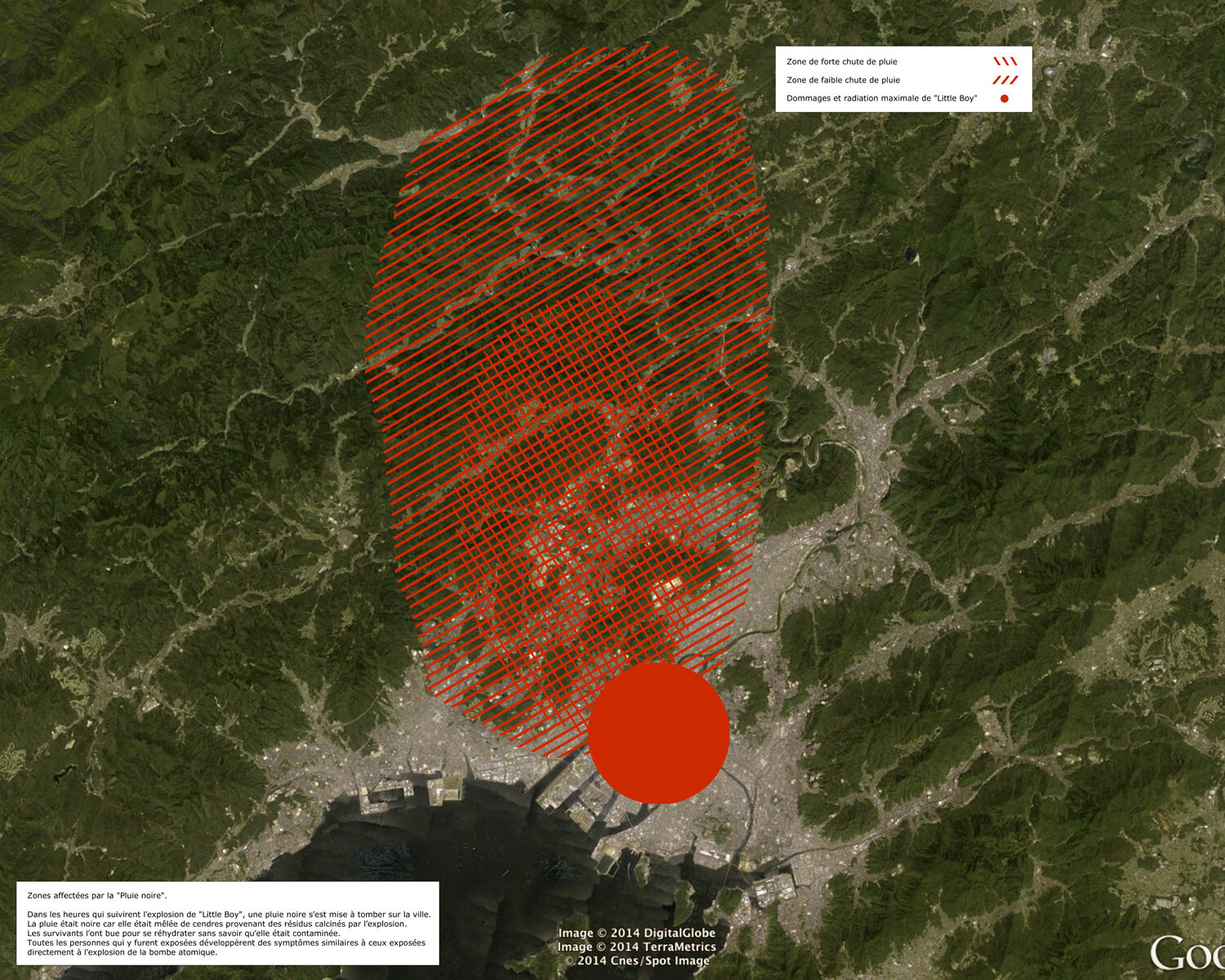
Zone 1 et 2 affectées par la «Pluie noire»
(Zone 1 and 2 affected by the «Black rain»)
The mixing of enormous amounts of airborne irradiated materials combined with heat and thermal currents from the firestorms led to rainfall in the Hiroshima area within 30–40 minutes of the bombing. As the fallout particles were mixed with carbon residue from citywide fires, the result was the injurious ‘Black rain’.
2014
paper size : 78 x 98 cm
image size : 72,5 x 92,5 cm
archival pigment print, FA Hahnemühle Baryta 325,
mounted, oak frame without glass.
edition of 3 + 2 artist’s proofs
signed, dated and numbered verso
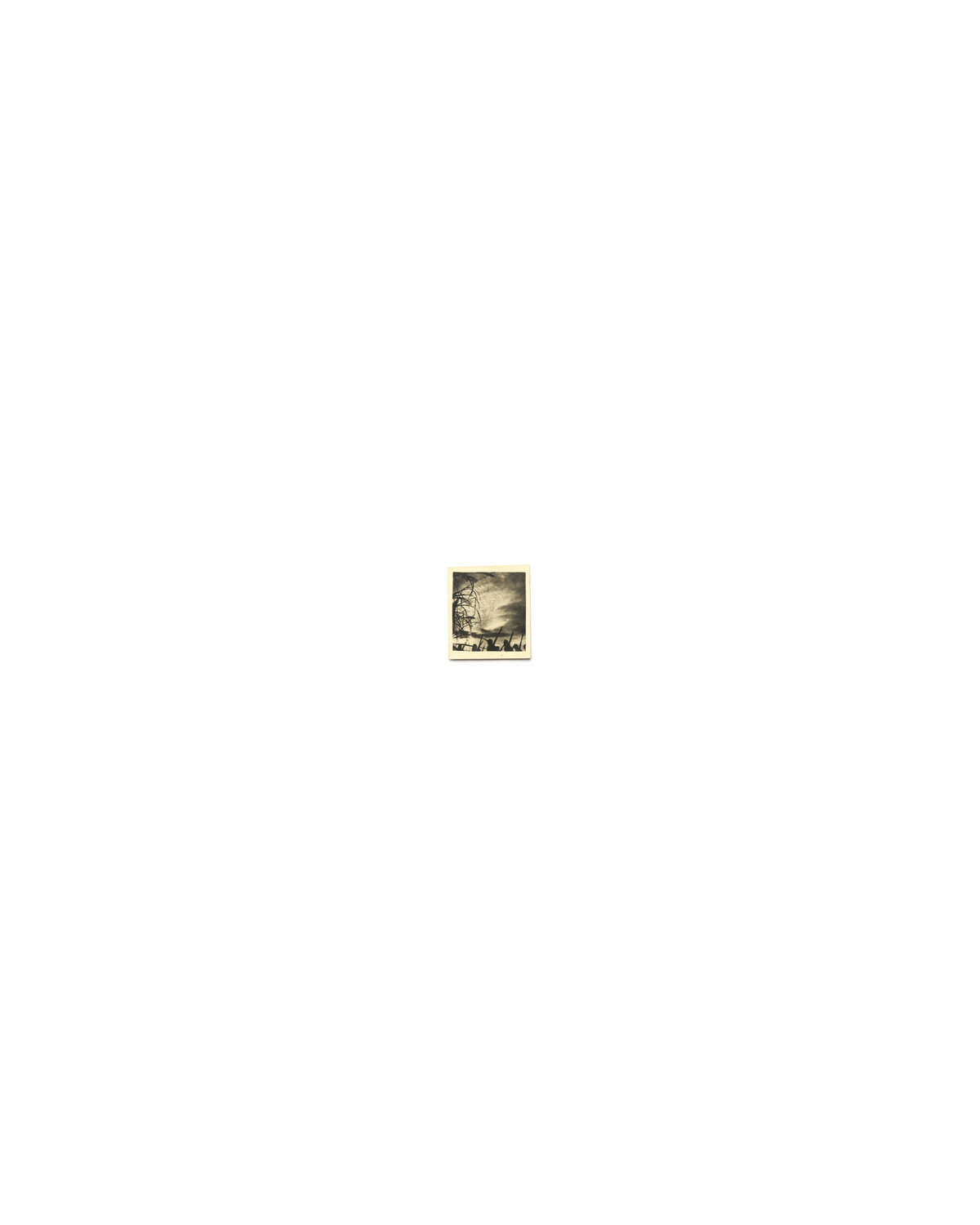
Opération mort
(Onward Towards Our Noble Deaths)
Archive from my family albums. Soldiers living in Japan.
The title is an homage to Shigeru Mizuki’s Onward Towards Our Noble Deaths a semiautobiographical manga account of the desperate final weeks of a Japanese infantry unit at the end of World War II.
2014
paper size : 79 x 63 cm
image size : 75 x 59 cm
archival pigment print, FA Hahnemühle Baryta 325,
mounted, oak frame without glass.
edition of 3 + 2 artist’s proofs
signed, dated and numbered verso

Neige fraîche (Haida Katsuhiko, Shinsetsu, 1942, part. 1)
(Fresh snow (Haida Katsuhiko, Shinsetsu, 1942, part. 1)
Folk song in Japan during the war.
2016
paper size : 78 x 98 cm
image size : 72,5 x 92,5 cm
archival pigment print, FA Hahnemühle Baryta 325,
mounted, oak frame without glass.
triptych
edition of 3 + 2 artist’s proofs
signed, dated and numbered verso

Neige fraîche (Haida Katsuhiko, Shinsetsu, 1942, part. 2)
(Fresh snow (Haida Katsuhiko, Shinsetsu, 1942, part. 2)
Folk song in Japan during the war.
2016
paper size : 78 x 98 cm
image size : 72,5 x 92,5 cm
archival pigment print, FA Hahnemühle Baryta 325,
mounted, oak frame without glass.
triptych
edition of 3 + 2 artist’s proofs
signed, dated and numbered verso

Neige fraîche (Haida Katsuhiko, Shinsetsu, 1942, part. 3)
(Fresh snow (Haida Katsuhiko, Shinsetsu, 1942, part. 3)
Folk song in Japan during the war.
2016
paper size : 78 x 98 cm
image size : 72,5 x 92,5 cm
archival pigment print, FA Hahnemühle Baryta 325,
mounted, oak frame without glass.
triptych
edition of 3 + 2 artist’s proofs
signed, dated and numbered verso
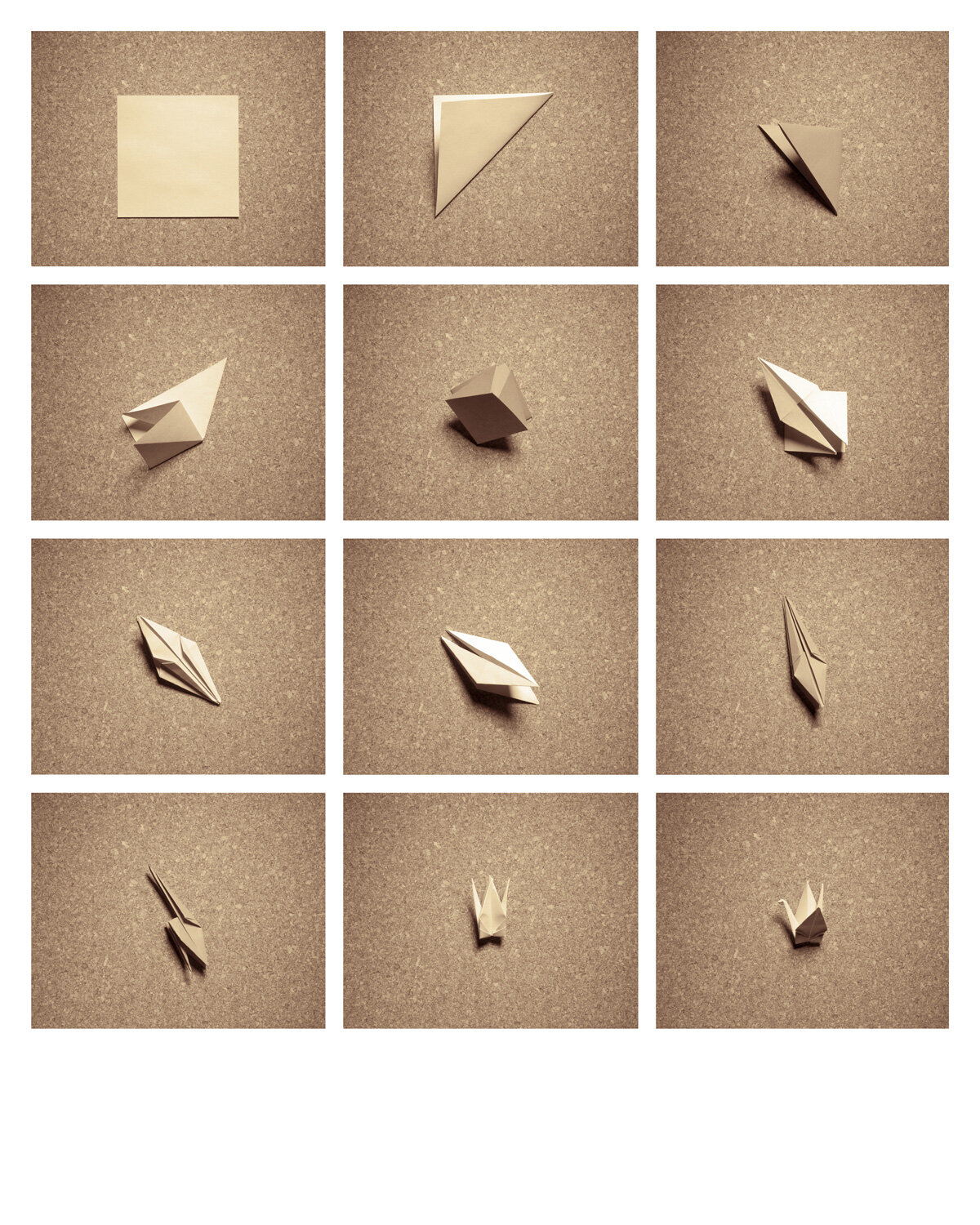
Comment plier une grue
(How to fold a crane)
2013
paper size : 79 x 63 cm
image size : 75 x 59 cm
archival pigment print, FA Hahnemühle Baryta 325,
mounted, oak frame without glass.
edition of 3 + 2 artist’s proofs
signed, dated and numbered verso
Pixel camouflage
In May 1942, to preserve Himeji Castle, its dungeon was camouflaged. In December 1943, its towers and walls followed.
2013
paper size : 63 x 79 cm
image size : 59 x 75 cm
archival pigment print, FA Hahnemühle Baryta 325,
mounted, oak frame without glass.
edition of 3 + 2 artist’s proofs
signed, dated and numbered verso
special edition of 20
produced for the C/O Berlin
30x37,5cm
archival pigment print
signed, dated and numbered verso
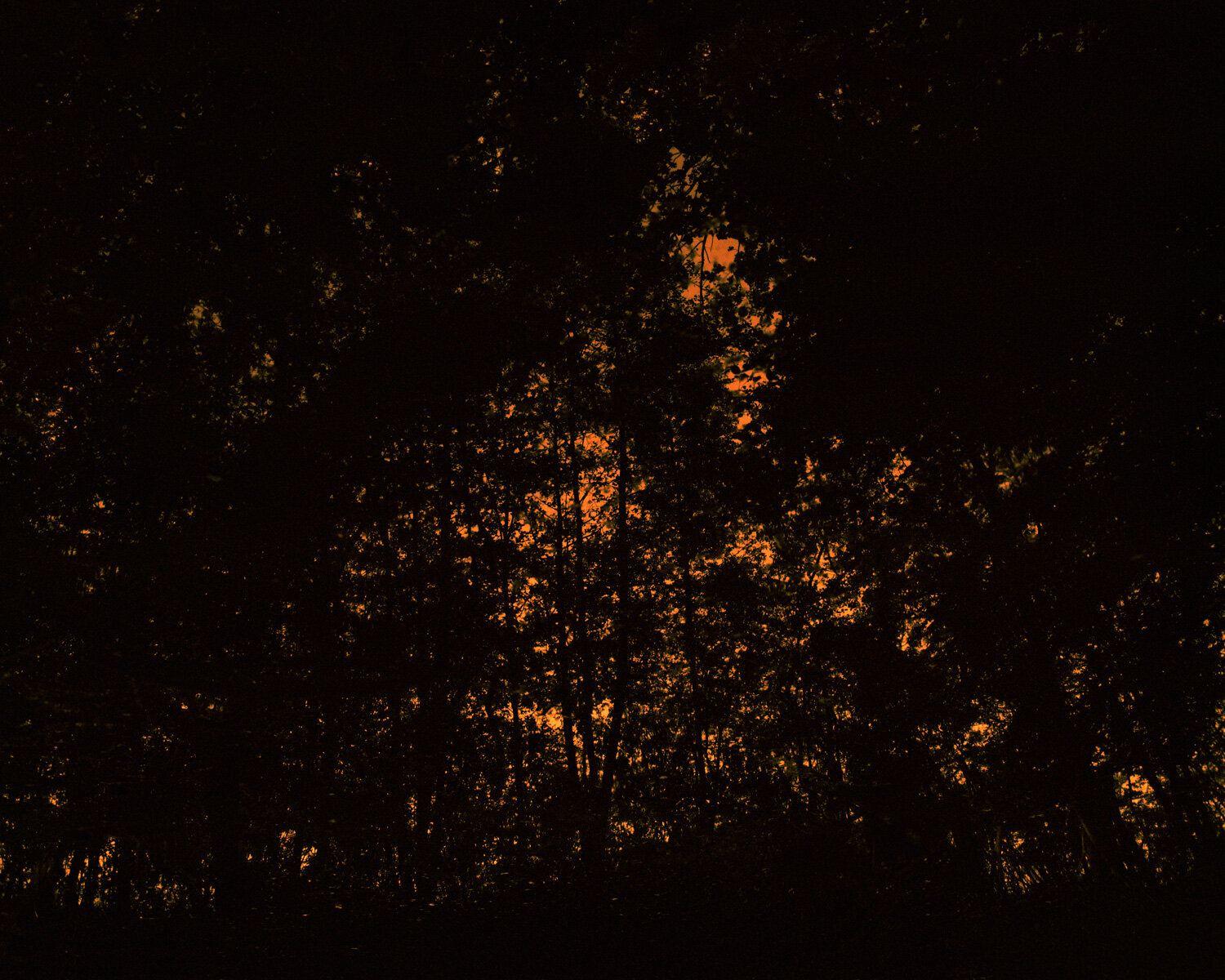
Ciel embrasé
(Blazing sky)
2012
paper size : 78 x 98 cm
image size : 72,5 x 92,5 cm
archival pigment print, FA Hahnemühle Baryta 325,
mounted, oak frame without glass.
edition of 3 + 2 artist’s proofs
signed, dated and numbered verso
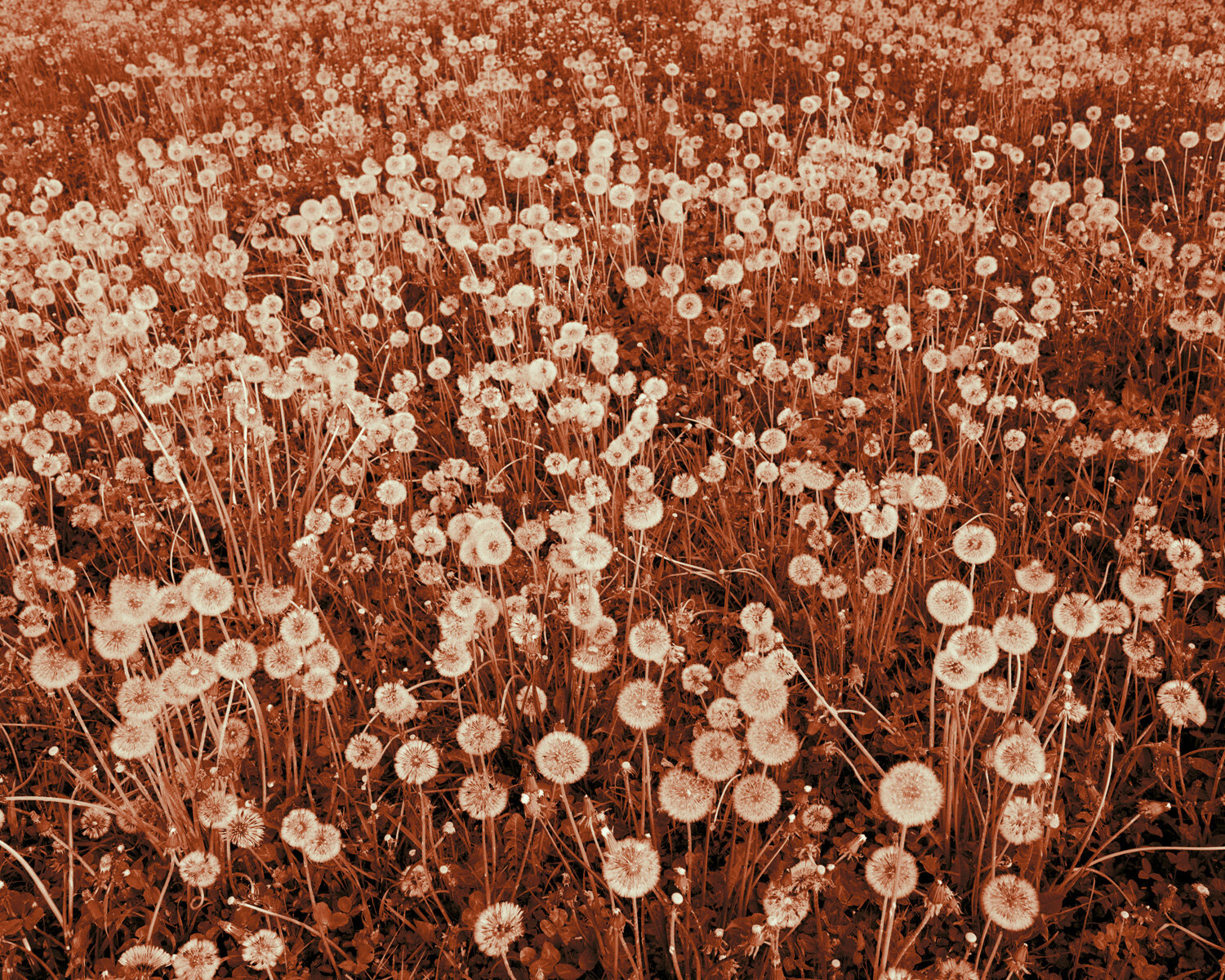
Son magnifique champ de fleurs
(Her beautiful field of flowers)
In 2010 I produced the picture Un magnifique champ de fleurs (A Beautiful Field of Flowers) for the Omoide Poroporo series. When I took this picture, for me it was just a beautiful field of flowers. A few months later, I spoke with my grandparents one night about their experiences during WWII. One of my grandfather’s memories was that one of his older sisters fell ill. And just before she died, the last sentence she said to their mother was: I saw a beautiful field of flowers.
So I decided to re-use my image Un magnifique champ de fleurs and to apply a red filter to my picture, creating a new piece Son magnifique champ de fleurs (Her Beautiful Field of Flowers), which could be her beautiful field of flowers as my aunt saw it before she died.
2013
paper size : 113 x 142 cm
image size : 106 x 135 cm
archival pigment print, FA Hahnemühle Baryta 325,
mounted, oak frame without glass.
edition of 3 + 2 artist’s proofs
signed, dated and numbered verso

Viiiuuu, viiiuuu, viiiuuu, viiiuuu
A lot of the memories of my grandparents during World War II were sounds. During the bombings, they went to underground shelters. It was dark. The memories that remain from these incidents are the sound of explosions, the sound of planes, people crying … So, my question was: how can I introduce sound into my pictures? It’s why I decided to use onomatopoeia (that were found in manga/comics) and to paint them over the prints using acrylic.I started to produce the three images with the onomatopoeia on the black background (‘Viiiuuu, viiiuuu, viiiuuu, viiiuuu’, ‘Tatatatata’ and ‘ARRGH!’). For me it was like this: I took the memories of my grandparents and literally transposed them onto the picture. (The underground shelters where it was very dark – black background with just the sound of people crying, the sound of airplanes, etc. – onomatopoeia).
2013
paper size : 98 x 78 cm
image size : 92,5 x 72,5 cm
archival pigment print, FA Hahnemühle Baryta 325, acrylic paint,
mounted, oak frame without glass.
unique
signed, dated and numbered verso
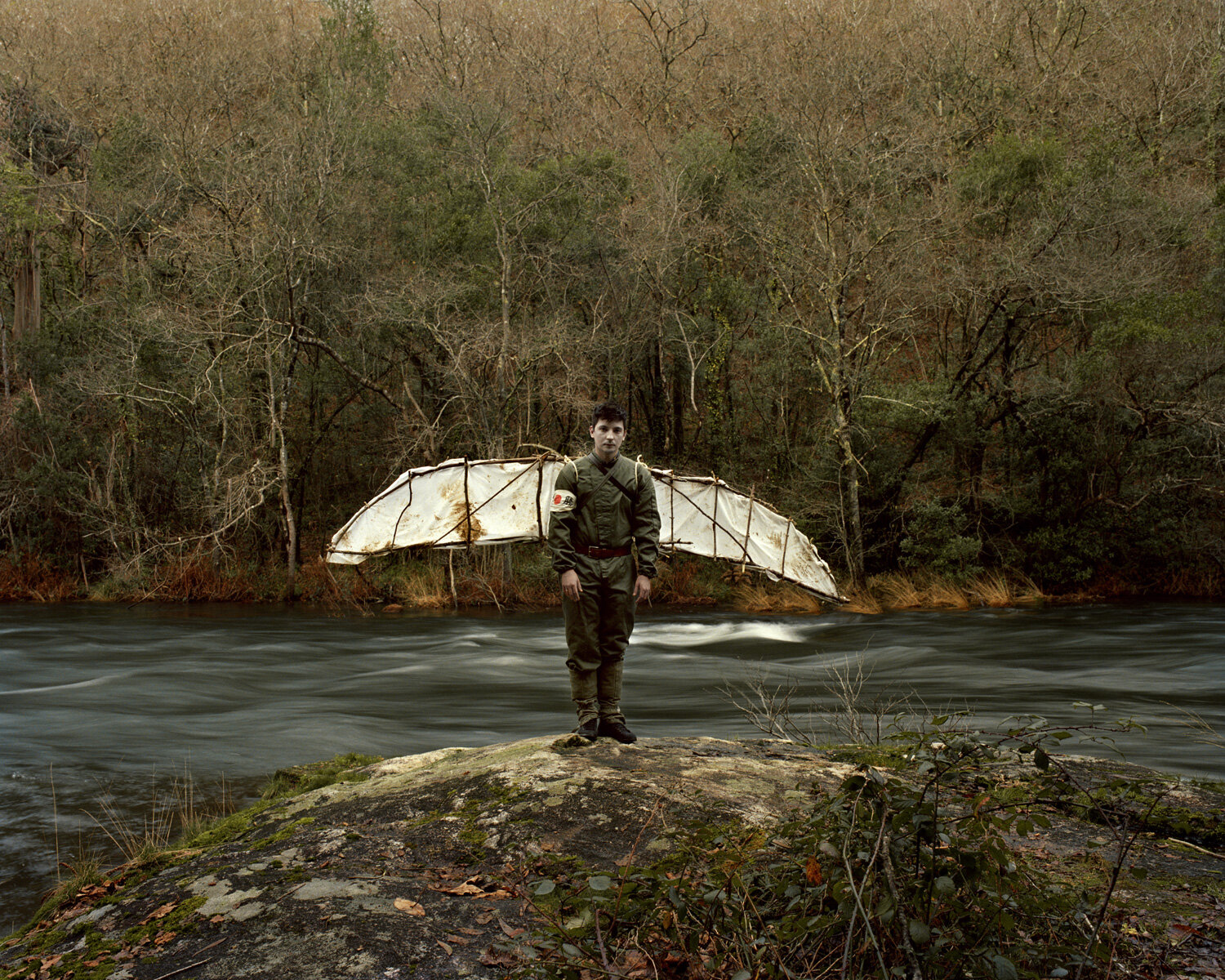
Vent divin
(Divine wind = kamikaze in Japanese)
The Japanese word kamikaze is usually translated as ‘divine wind’ (kami is the word for ‘God’, ‘spirit’, or ‘divinity’, and kaze for ‘wind’). The word has been used since August 1281 to refer to the major typhoons that dispersed the Mongol fleets that invaded Japan under Kublai Khan in 1274 and 1281, thus saving Japan from foreign conquests.
2013
paper size : 113 x 142 cm
image size : 106 x 135 cm
archival pigment print, FA Hahnemühle Baryta 325,
mounted, oak frame without glass.
edition of 3 + 2 artist’s proofs
signed, dated and numbered verso

Bombardements
(Bombings)
My grandparents lived in Kobe during WWII. On 16/17 March 1945, 331 American B-29 bombers launched a firebomb attack against the city of Kobe. The city would be bombed again in later months.
2012
paper size : 146 x 183,5 cm
image size : 137,5 x 175 cm
archival pigment print, FA Hahnemühle Baryta 325,
mounted, oak frame without glass.
edition of 3 + 2 artist’s proofs
signed, dated and numbered verso
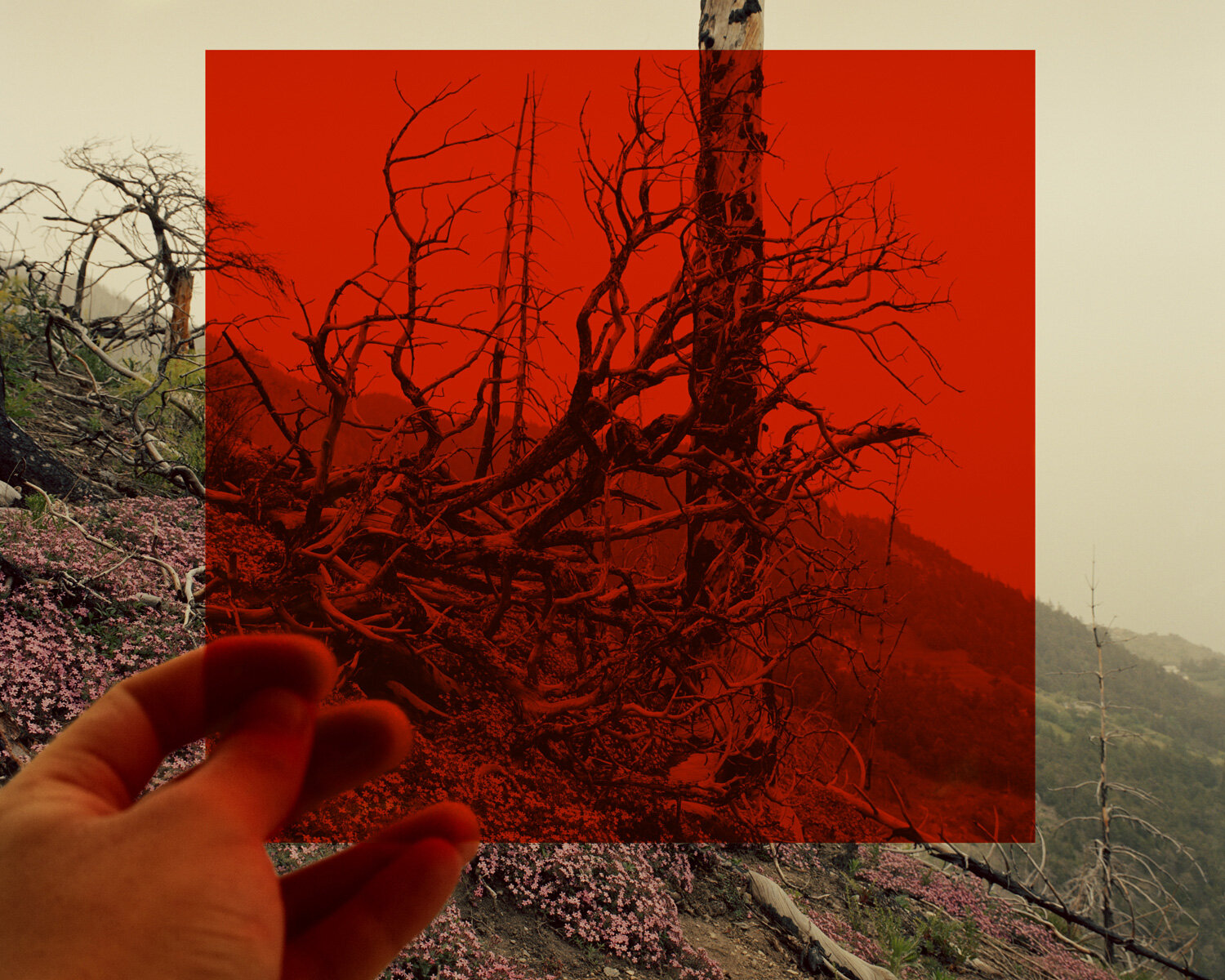
Le carré rouge
(The red square)
2014
paper size : 63 x 79 cm
image size : 59 x 75 cm
archival pigment print, FA Hahnemühle Baryta 325,
mounted, oak frame without glass.
edition of 3 + 2 artist’s proofs
signed, dated and numbered verso
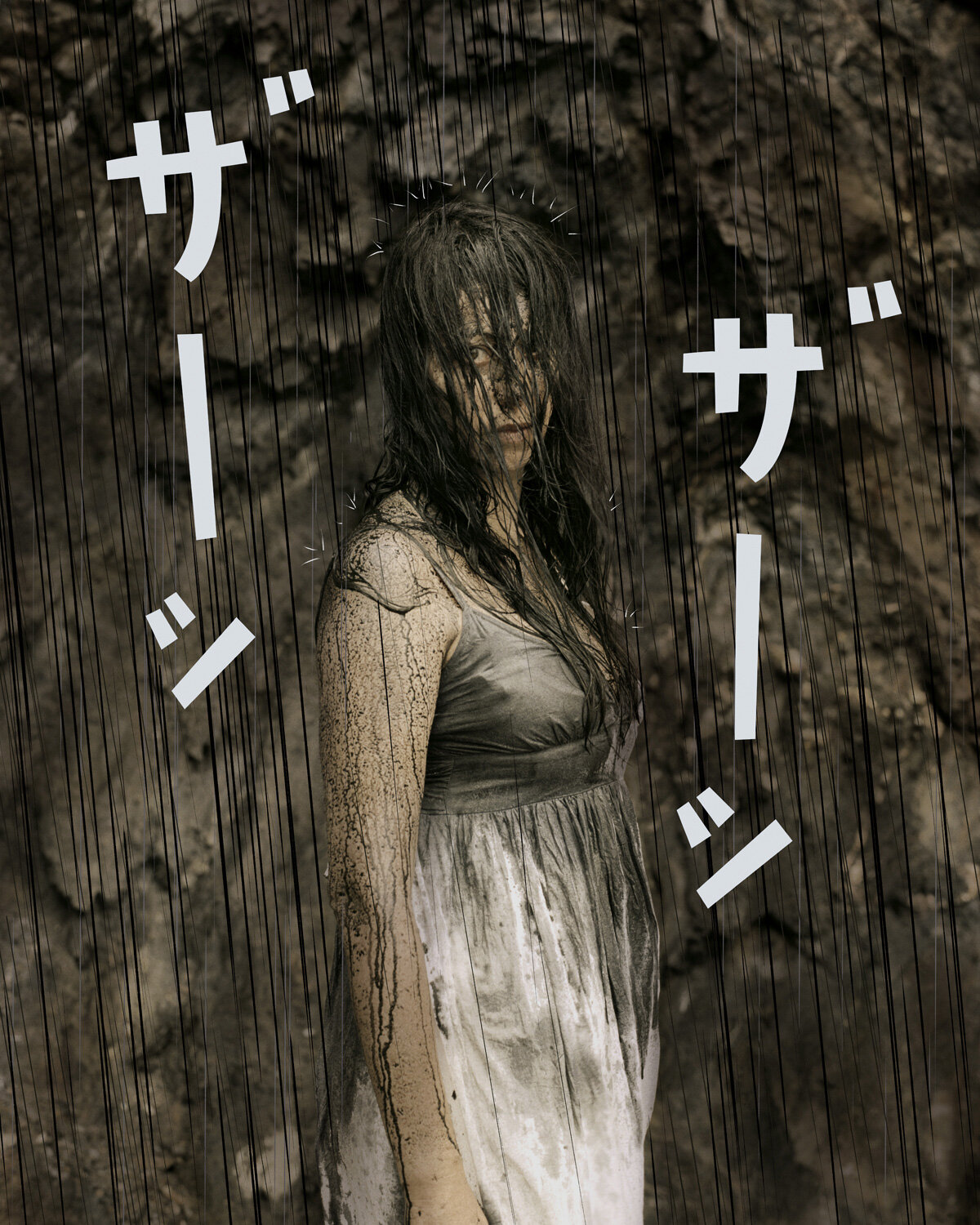
Pluie noire
(Black rain)
The ‘black rain’ reached ground level as sticky, dark, dangerously radioactive water. It not only stained skin, clothing, and buildings, but also was ingested through breathing and consumption of contaminated food or water, causing radiation poisoning.
2014
paper size : 147 x 117 cm
image size : 140 x 110 cm
archival pigment print, FA Hahnemühle Baryta 325, acrylic paint,
mounted, oak frame without glass.
unique
signed, dated and numbered verso

Là, où vivent les corbeaux
(Where the crows live)
2012
paper size : 113 x 142 cm
image size : 106 x 135 cm
archival pigment print, FA Hahnemühle Baryta 325,
mounted, oak frame without glass.
edition of 3 + 2 artist’s proofs
signed, dated and numbered verso
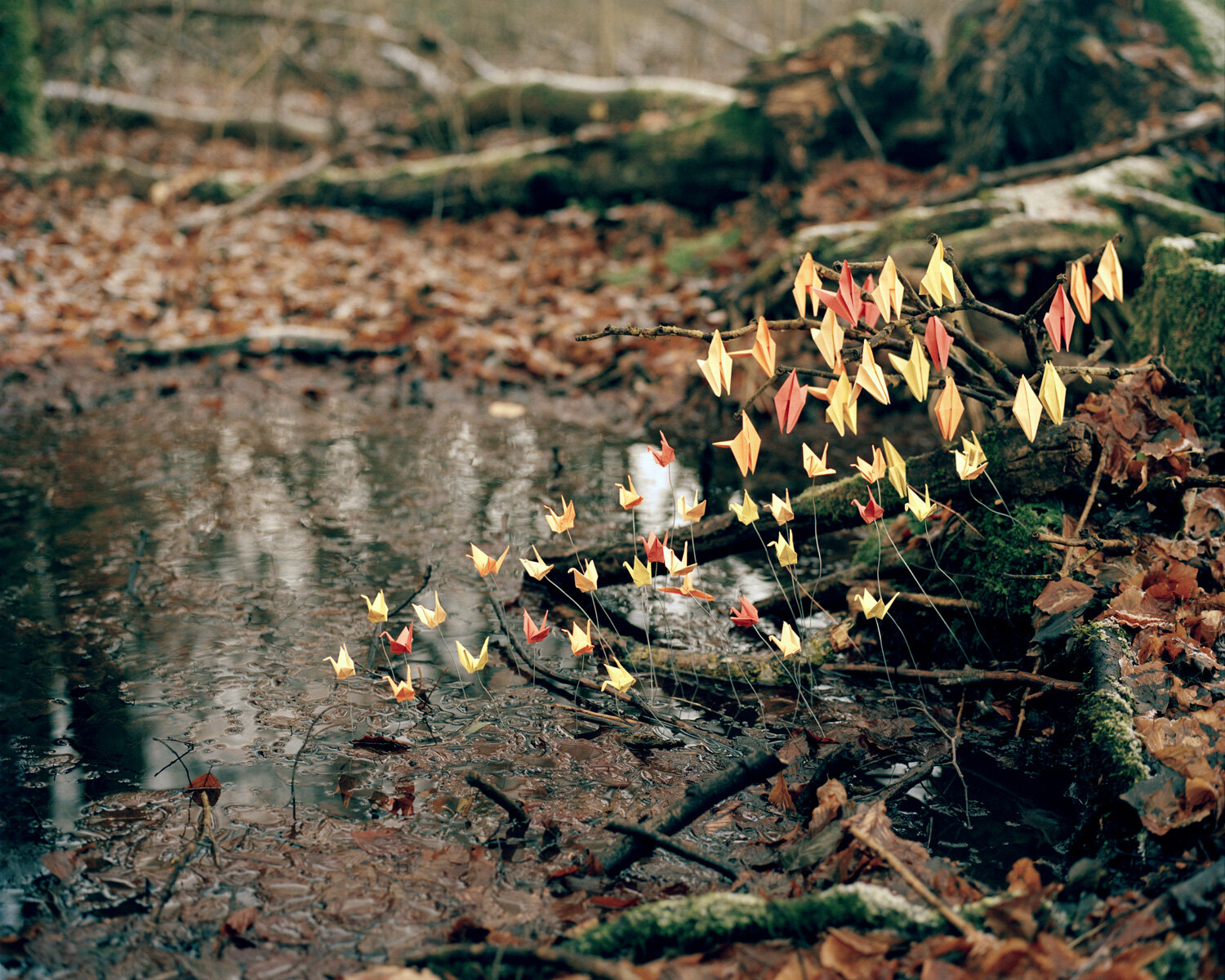
Pour Sadako
(For Sadako)
Sadako was two years old and two kilometres away from the atomic bomb when it was dropped on Hiroshima. She was healthy growing up, but ten years after the bombing she was suddenly hospitalised. The diagnosis was leukaemia. During Sadako’s stay in the hospital, her best friend, Chizuko, came to visit her. Chizuko brought some origami (folding paper) and told Sadako of a legend. She explained that the crane, a sacred bird in Japan, lives for a hundred years, and if a sick person folds 1,000 paper cranes, then that person would soon get well. After hearing the legend, Sadako decided to fold 1,000 cranes. A popular version of the story is that Sasaki fell short of her goal of folding 1,000 cranes, having folded only 644 before her death and that her friends completed the 1,000 and buried them all with her.
2012
paper size : 63 x 79 cm
image size : 59 x 75 cm
archival pigment print, FA Hahnemühle Baryta 325,
mounted, oak frame without glass.
edition of 3 + 2 artist’s proofs
signed, dated and numbered verso
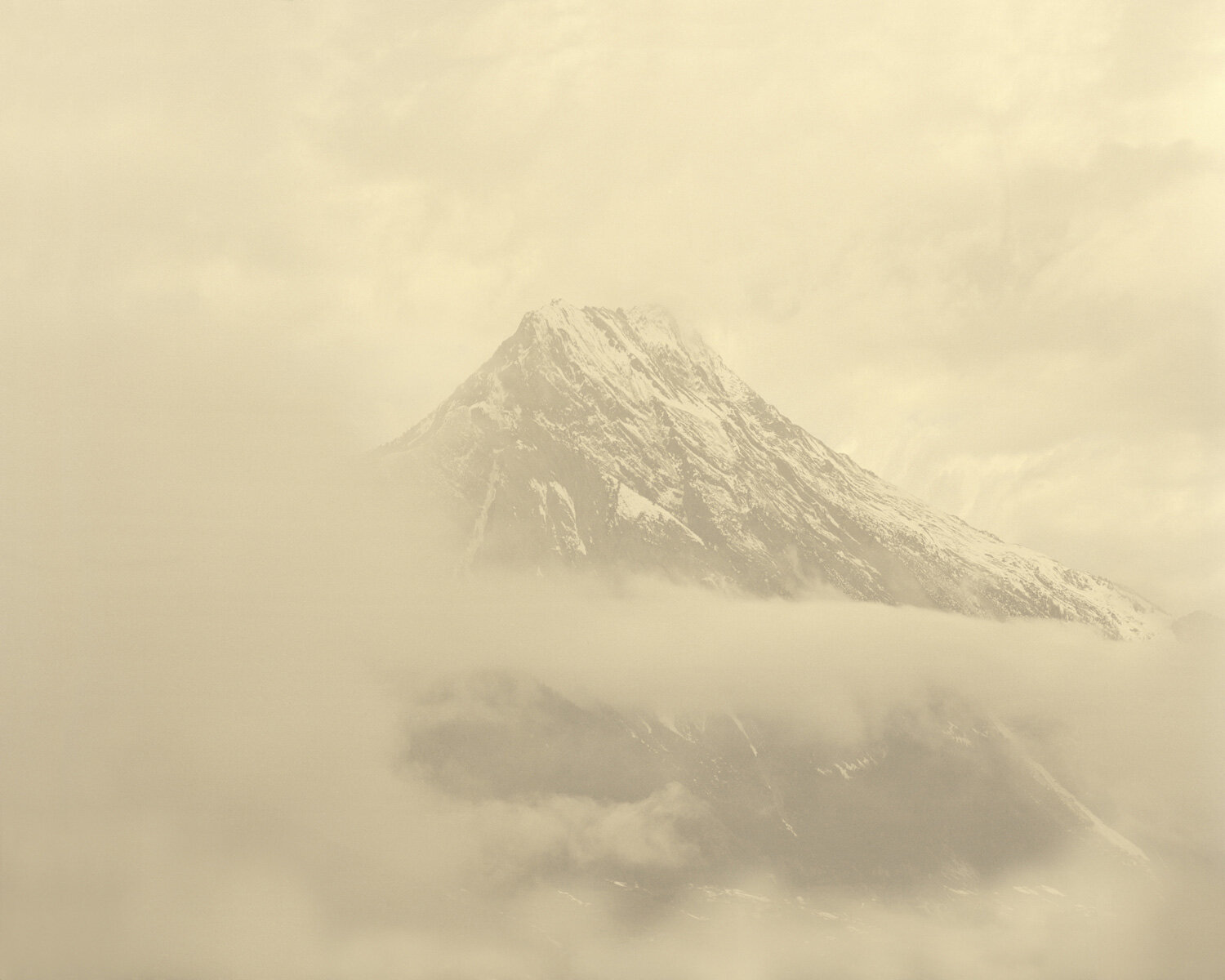
Fuji VS Catogne
2012
paper size : 113 x 142 cm
image size : 106 x 135 cm
archival pigment print, FA Hahnemühle Baryta 325,
mounted, oak frame without glass.
edition of 3 + 2 artist’s proofs
signed, dated and numbered verso





























